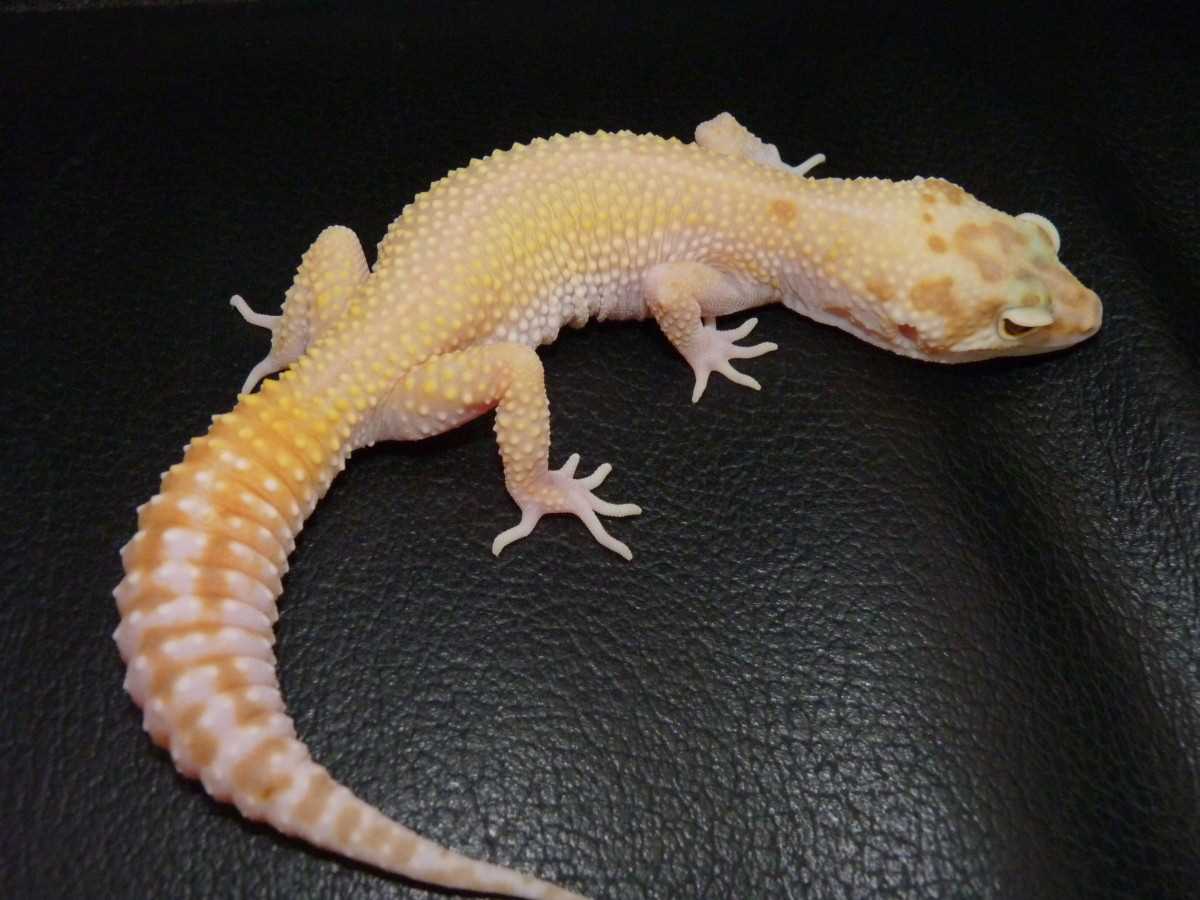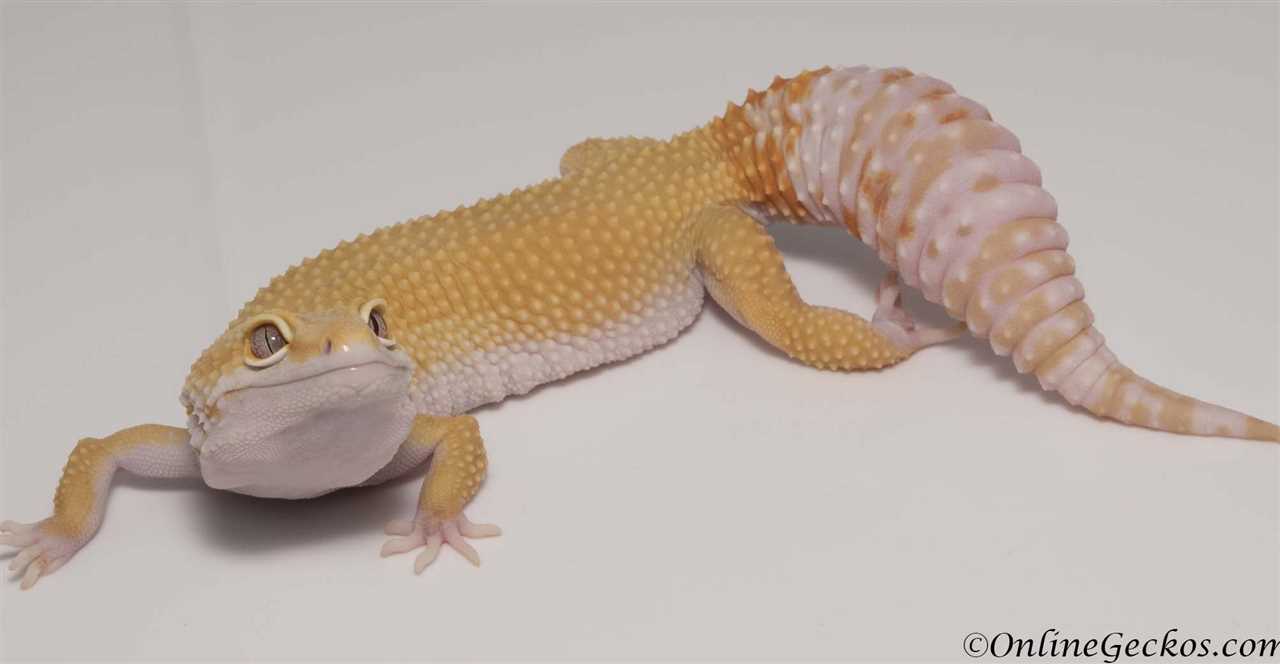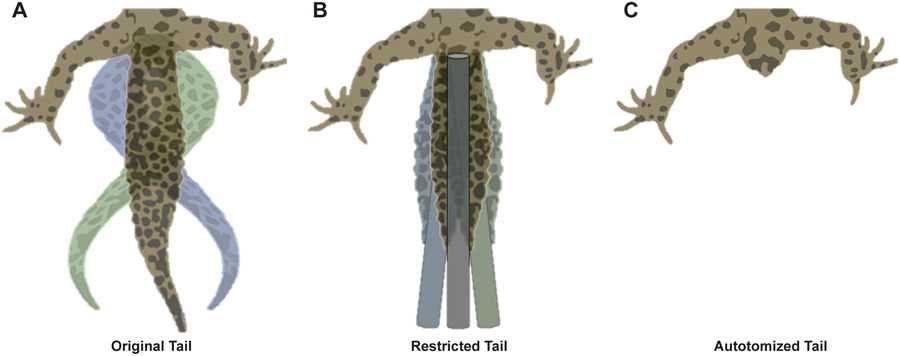One of the most distinctive features of geckos is their vibrant green coloration, which helps them blend in seamlessly with their lush tropical habitat. This green coloration is not only visually striking, but it also serves a practical purpose in the gecko’s survival. It allows them to hide from predators and prey alike, making them excellent ambush predators.
An Overview of Gecko Anatomy
Geckos are a fascinating species of reptiles known for their distinctive features and behavior. They are part of the lizard family and can be found in various regions around the world, particularly in tropical and subtropical environments. One of the most notable characteristics of geckos is their unique and highly specialized anatomy.
Geckos have a slender body with a long, tapering tail that serves several important functions. The tail is covered in scales, which provide protection and help regulate the gecko’s body temperature. These scales also aid in the gecko’s movement, allowing it to crawl and cling onto various surfaces with ease. The tail of a gecko is typically green in color, which helps them to blend in with their natural surroundings.
The overall anatomy of a gecko includes a head, body, limbs, and a tail. They have a unique arrangement of teeth, with rows of tiny, pointed teeth designed to help them catch and consume their prey. Geckos also possess a specialized jaw structure that enables them to swallow their food whole, making them highly efficient hunters.
| Anatomy | Function |
|---|---|
| Tail | Provides balance and agility, acts as a defensive mechanism, helps regulate temperature |
| Scales | Protects the body, aids in movement and climbing |
| Teeth | Enables efficient prey capture and consumption |
| Jaw | Allows geckos to swallow food whole |
The Unique Features of Gecko Feet
A gecko is a type of lizard that is found in various habitats, especially in tropical regions. This reptile is known for its ability to crawl up walls and even walk upside down on ceilings. One of the fascinating aspects of a gecko’s anatomy is its feet, which are specially adapted for climbing.
Scales and Toepads
Gecko feet are covered with a complex structure of microscopic hairs called setae. These setae are further divided into even smaller structures called spatulae. The setae and spatulae on a gecko’s feet create a large surface area that allows the lizard to adhere to surfaces.
The soft, flexible skin on the bottom of a gecko’s feet is covered with fine scales that help enhance grip and prevent slipping. These scales also provide protection to the delicate tissues underneath and enable the gecko to maintain traction on various surfaces.
The Role of the Tail
The tail of a gecko is covered in specialized scales, similar to those on its feet, that further aid in gripping surfaces. These scales on the tail work in conjunction with the ones on the feet, enabling the gecko to have a firm grip whether it is climbing vertically or horizontally.
Adaptations and Function
The unique structure of gecko feet and tail allows them to utilize a phenomenon called “van der Waals forces” to cling to surfaces. These forces are weak intermolecular attractions that are present due to the proximity of molecules on different surfaces. The large surface area created by the setae and spatulae on a gecko’s feet maximizes these forces, allowing the lizard to stick to surfaces without the need for any adhesive substances.
Geckos can control the stickiness of their feet by adjusting the angle at which they place their feet on a surface. When the gecko wants to release its hold, it can simply twist or lift its foot, disrupting the van der Waals forces and detaching from the surface.
The Role of the Tail in Gecko Movement
When a gecko is climbing, it uses a crawling motion that involves the coordinated movement of its limbs and tail. The tail provides support and helps distribute the gecko’s weight evenly. This allows the gecko to move effortlessly and maintain its position on vertical or inverted surfaces.
Not only does the tail assist with climbing, but it also serves as a storage facility for the gecko. Geckos have the amazing ability to detach their tails when threatened by a predator. This unique defense mechanism allows the gecko to escape and regrow its tail over time. The tail acts as a distraction for the predator, giving the gecko a chance to get away.
The Role of Tail in Communication
In addition to its role in movement and defense, the gecko’s tail also plays a role in communication. Geckos use their tails to communicate with other geckos, displaying various movements and postures. For example, when a gecko curls its tail, it can signal aggression or territoriality. On the other hand, a relaxed and extended tail may indicate a calm and non-threatening behavior.
Overall, the tail of a gecko is a remarkable adaptation that enables these reptiles to survive and thrive in their natural habitats. Its role in movement, defense, and communication make it an essential part of a gecko’s anatomy.
The structure and function of gecko eyes

The eyes of geckos are large and prominent, situated on the sides of their head. They have a spherical shape and are covered by a transparent membrane called the cornea, which protects the eyes from dust and other particles in the environment. The cornea also helps in focusing the light that enters the eyes.
One of the distinctive features of gecko eyes is their ability to see in a wide range of colors. Geckos have well-developed color vision, allowing them to distinguish between different shades and hues. This is particularly important for geckos that live in tropical habitats, where there is a vast array of colorful plants and insects.
Geckos also possess a specialized structure called the tapetum lucidum, which enhances their vision in low-light conditions. The tapetum lucidum is a layer of reflective cells located behind the retina. It reflects incoming light back through the retina, increasing the amount of light available for the gecko’s photoreceptor cells. This adaptation allows geckos to see clearly at night and in dimly lit environments.
The eyes of geckos are also protected by a specialized eyelid structure. Unlike humans and many other animals, geckos have a transparent and immobile eyelid called a spectacle or a brille. This protective covering keeps the eyes clean and moist, even when the gecko is crawling on rough surfaces.
The Remarkable Ability of Geckos to Climb Walls
Geckos are a unique type of lizard known for their incredible climbing ability. With their specialized toe pads covered in microscopic hairs called setae, geckos are able to cling to almost any surface, including smooth glass and vertical walls. This remarkable feat of adhesion is due to the combination of the structure and function of their feet.
Anatomy of Gecko Feet
The toe pads of geckos are covered in thousands of tiny, branched setae. These setae are made up of even smaller structures called spatulae, which are responsible for the gecko’s adhesive properties. The spatulae create weak molecular bonds with the surfaces they come into contact with, allowing the gecko to adhere to and climb on them.
The structure of the setae and spatulae is crucial to the gecko’s climbing ability. The branched setae increase the total surface area of contact, distributing the weight of the gecko across a larger area and enhancing adhesion. Each seta is so small that it can interact with individual molecules on the surface, creating a strong enough bond to support the gecko’s weight.
The Science of Gecko Adhesion
The secret to gecko adhesion lies in the intermolecular forces between the setae and the surface. Van der Waals forces, a type of intermolecular force, play a major role in gecko adhesion. These forces arise from temporary fluctuations in electron distribution, creating weak attractions between molecules. The large number of setae on a gecko’s toe pads allows for a significant cumulative effect of these forces, resulting in strong adhesion.
Tropical Habitats and Climbing Adaptations
Geckos have also developed other adaptations to suit their climbing lifestyle. Their bodies are streamlined, with a slender shape and flattened tail, which helps to reduce drag when crawling up surfaces. The muscles in their limbs are well-developed, giving them the strength and agility needed for climbing.
- Geckos have become symbols of agility and adaptability, thanks to their incredible climbing ability.
- Scientists continue to study gecko adhesion to unlock its potential applications in various industries.
- The unique structure of gecko feet has inspired the development of innovative adhesive technologies.
- Gecko climbing abilities are especially useful in tropical habitats, where vertical surfaces are plentiful.
- Through their remarkable ability to climb walls, geckos have carved out a successful niche in the reptile world.
Gecko Defense Mechanisms
Geckos are fascinating creatures that have evolved a variety of defense mechanisms to protect themselves from predators in their natural habitat. These defense mechanisms include their unique scales, tail, and ability to crawl on walls.
Geckos have a special ability to camouflage themselves in their environment using their scales. Their scales are covered with specialized cells that can change color to match their surroundings, allowing them to blend in and avoid detection by predators. This camouflage is especially effective in their natural habitat, such as green leaves or tree trunks.
In addition to camouflage and tail detachment, geckos also have the incredible ability to crawl on walls and ceilings. This unique adaptation is due to microscopic hairs on their feet called setae, which allow them to stick to almost any surface. These setae create a strong molecular attraction called van der Waals forces that enable geckos to climb vertical surfaces without using any adhesive or suction cups.
| Defense Mechanism | Description |
|---|---|
| Camouflage | Geckos can change color to blend in with their environment, providing them with an effective disguise. |
| Tail detachment | Geckos can detach their tails from their bodies as a distraction technique, allowing them to escape from predators. |
| Wall crawling | Geckos have the ability to climb vertical surfaces due to special microscopic hairs on their feet that create a molecular attraction. |
These defense mechanisms have allowed geckos to adapt to their habitat and survive in a wide range of environments. They have evolved unique characteristics that enable them to defend themselves against predators and increase their chances of survival.
Feeding habits of geckos
Geckos are fascinating creatures that belong to the lizard family, known for their unique features and behaviors. These green reptiles are commonly found in tropical regions, where they crawl and climb with their adhesive toe pads. One of the most interesting aspects of gecko behavior is their feeding habits.
Dietary preferences
Geckos are omnivorous creatures, meaning they consume both plant matter and small invertebrates. Their diet primarily consists of insects such as crickets, locusts, and flies. However, geckos can also consume fruits, nectars, and sap when they are available. This versatile diet allows geckos to adapt to different habitats and food availability.
Feeding techniques
Geckos have specialized feeding techniques that enable them to capture their prey efficiently. Using their quick reflexes and impressive visual acuity, geckos locate and stalk their prey. Once in range, geckos strike their prey with lightning speed, using their sharp teeth to secure a grip.
Feeding behavior
Geckos are crepuscular or nocturnal creatures, meaning they are most active during twilight or at night. They hunt their prey during these periods when their specialized eyes can detect movement in low light conditions. Geckos have vertical pupils that enable them to have a wide field of vision and enhanced depth perception.
Unlike some other reptiles, geckos do not need to drink water regularly. They obtain most of their hydration from their diet, which contains a high moisture content. However, geckos may still drink water droplets from leaves or other surfaces if necessary.
Conclusion
Reproduction and Mating Behaviors of Geckos
The reproduction and mating behaviors of geckos are fascinating to observe. Geckos, like many reptiles, have unique methods of reproduction that are essential for their survival in their tropical habitat.
One interesting aspect of gecko reproduction is their mating rituals. Male geckos often exhibit elaborate displays to attract females. These displays can include vocalizations, head bobbing, and tail waving. The colorful and vibrant scales of the male gecko are used to impress potential mates.
Mating Pairs and Courtship Displays
Once a male gecko has successfully attracted a female, they engage in courtship displays. During the courtship, the male follows the female closely, mirroring her movements and flicking his tail. These displays are meant to demonstrate the male’s strength and ability to protect the female.
Geckos also engage in a variety of physical displays during courtship. This can include rubbing their bodies together, touching noses, and licking each other. These behaviors serve both as a form of bonding and as a way to determine the female’s receptiveness to mating.
Egg Laying and Parental Care
After mating, female geckos lay eggs. The process of egg-laying varies depending on the species, but it usually involves finding a suitable location in the habitat, digging a hole, and depositing the eggs. Some gecko species lay their eggs in moist areas, while others prefer drier locations.
Once the eggs are laid, the female gecko does not provide any further parental care. The eggs are left to develop on their own, and the hatchlings emerge fully formed. This lack of parental care is typical of many reptile species.
Reproductive Strategies
Geckos have evolved a variety of reproductive strategies to ensure the survival of their species. Some gecko species are oviparous, which means they lay eggs, while others are ovoviviparous, which means they give birth to live young.
In the case of oviparous geckos, the eggs are usually buried or hidden in a protected area to avoid predation. This strategy increases the chances of the eggs hatching successfully and the hatchlings surviving to adulthood.
Conclusion
The communication methods of geckos

Geckos, a type of lizard known for their ability to crawl up walls and ceilings, have developed a unique set of communication methods to interact with their environment and other geckos. These tropical, green reptiles primarily rely on non-vocal signals and visual displays to communicate with each other.
Tail movements as a form of communication
Tail wagging can also be used during courtship rituals, with the male gecko performing a series of rhythmic tail sways to attract a female. This behavior is often accompanied by other visual displays, such as body postures and color changes, to further enhance the communication process.
Interestingly, some gecko species have the ability to detach their tails as a defense mechanism when threatened by predators. The ability to regenerate their tails allows them to use this body part as a decoy, diverting the predator’s attention while the gecko escapes to safety.
Visual displays and body language

In addition to tail movements, geckos rely on visual displays and body language to communicate. They have specialized skin cells that can change color, allowing them to blend into their surroundings or display vibrant patterns. These color changes can be used to communicate aggression, submission, or even mating readiness.
Geckos also use body language to communicate their intentions and establish dominance hierarchies. This can include head bobbing, tail arching, and puffing up their bodies to appear larger and more intimidating.
Scent marking and pheromones
Another form of communication utilized by geckos is scent marking. They have specialized glands on their bodies that secrete pheromones, chemical signals that can transmit information to other geckos. By rubbing against surfaces or leaving scent trails, geckos can mark their territory and communicate their presence to potential mates or rivals. These pheromones can also convey information about the gecko’s reproductive status and health.
The Social Behavior of Geckos
Geckos, a type of lizard known for their distinctive ability to climb walls and ceilings, exhibit fascinating social behavior. These small, green reptiles with characteristic sticky feet and unique tails are commonly found in tropical habitats.
Geckos are typically solitary creatures, spending most of their time hunting for food and defending their territory. However, during the mating season, geckos engage in various social interactions. Males often engage in territorial disputes, using their tails to communicate and establish dominance.
Geckos use their tails to crawl on surfaces and communicate with each other through a combination of visual and tactile signals. They will rapidly wave their tails, showing off their bright scales and indicating their willingness to defend their territory or attract a mate.
While gecko social structures are not well understood, researchers have observed that geckos may form loose associations with others of their species. These associations are typically temporary and are believed to be primarily for mating purposes.
During these associations, geckos may engage in complex courtship rituals, including chasing, tail wagging, and unusual posturing. Males may also produce chirping sounds to attract females. Once a pair is formed, they will engage in a series of behaviors, such as rubbing their bodies against each other and licking each other’s scales.
Geckos also communicate using visual displays and body movements. They may change the color of their skin, open their mouths, or bob their heads as a way to express their intentions or communicate with other geckos. These displays are essential for establishing social hierarchy and avoiding confrontations.
The Impact of Habitat on Gecko Behavior

Geckos are a type of lizard known for their unique ability to climb walls and ceilings. These reptiles are found in a variety of habitats, from tropical rainforests to arid deserts. The specific habitat that a gecko lives in can greatly influence its behavior and adaptations.
Crawl and Tail
Green and Habitat
The coloration of geckos is often influenced by their habitat. For example, geckos living in dense rainforests tend to have green or brown coloration, which provides camouflage amongst the foliage. In contrast, geckos that inhabit arid environments may have lighter coloration, such as shades of gray or tan, to blend in with the surrounding rocks and sand.
| Habitat Type | Gecko Adaptations |
|---|---|
| Tropical Rainforest | Green or brown coloration for camouflage. |
| Arid Desert | Lighter coloration to blend in with rocks and sand. |
| Urban Areas | Ability to hide in small crevices and structures. |
Geckos in urban areas have also adapted to their surroundings. They are often found hiding in small crevices and structures, such as buildings or walls. This allows them to remain hidden from predators and take advantage of the abundant food sources found in urban environments.
Common predators of geckos
Geckos, with their small size and delicate bodies, are often targeted by a variety of predators in their natural habitats. These predators pose a constant threat to geckos, and their survival depends on their ability to avoid detection and escape. Here are some of the common predators of geckos:
- Snakes: Snakes are one of the main predators of geckos. They use their excellent sense of smell and heat detection to locate geckos, and their speed and agility to capture them. Snakes are especially dangerous for geckos because they can crawl into small crevices and hiding spots where geckos seek refuge.
- Birds: Many species of birds, such as hawks and owls, prey on geckos. These aerial predators have sharp claws and beaks, which they use to catch and kill geckos. They often hunt at night, when geckos are most active and vulnerable.
- Small mammals: Rats, mice, and other small mammals are opportunistic predators of geckos. They can locate geckos using their sense of smell and hearing, and can easily capture them due to their larger size and strength. These predators often hunt both during the day and at night.
- Other reptiles: Some larger reptiles, such as monitor lizards and crocodiles, also prey on geckos. These predators have a wide range of hunting techniques and can overpower geckos with their size and strength.
To protect themselves from these predators, geckos have developed several defensive adaptations. They can change their body color to blend in with their surroundings, making it difficult for predators to spot them. Some geckos also have the ability to detach their tails when they are caught by a predator, allowing them to escape while the predator is distracted by the wriggling tail. Additionally, geckos have a unique ability to regenerate their tails over time.
The habitat in which geckos live also plays a crucial role in their vulnerability to predators. Geckos that inhabit tropical rainforests, for example, face a higher predation risk due to the dense vegetation and the presence of numerous predators. On the other hand, geckos that live in arid or desert regions may encounter fewer predators due to the harsh conditions of their environment.
The Future of Gecko Research and Conservation Efforts
Geckos, with their distinct green coloration, unique scales, and long tails, are fascinating creatures that are found in various tropical regions around the world. These small lizards, known for their ability to crawl on vertical surfaces, have attracted the attention of researchers and conservationists alike.
Research Focus Areas
Current and future research efforts on geckos focus on several key areas:
- Developing sustainable conservation practices: Conservationists are working to develop sustainable practices for protecting geckos and their habitats. This includes efforts to regulate the pet trade, establish protected areas, and educate local communities about the importance of conserving these unique creatures.
The Importance of Conservation
Geckos, like many other species, are facing numerous threats to their survival. Habitat destruction, climate change, and illegal wildlife trade are exacerbating these challenges. Conserving geckos is not only important for preserving biodiversity but also for maintaining the delicate balance of ecosystems in which they play vital roles.
Conservation efforts can help protect gecko populations from further decline and ensure their future survival. Through research, education, and sustainable practices, we can create a future where geckos continue to thrive in their natural habitats.

I’m Lena Adams—a product of an unconventional upbringing in the African wilderness. My father, a daring explorer of African wildlife, sparked my fascination with reptiles, a passion that intertwined with the tragic loss of my mother during an expedition, leaving an indelible mark on my life. Driven to understand the creatures that captivated my parents, I embarked on my journey, sharing insights about reptiles, frogs, and lizards on my website. Through my explorations and conservation efforts, I honour my family’s legacy while seeking connections—to the creatures, nature, and the mother whose presence I yearn to understand.
